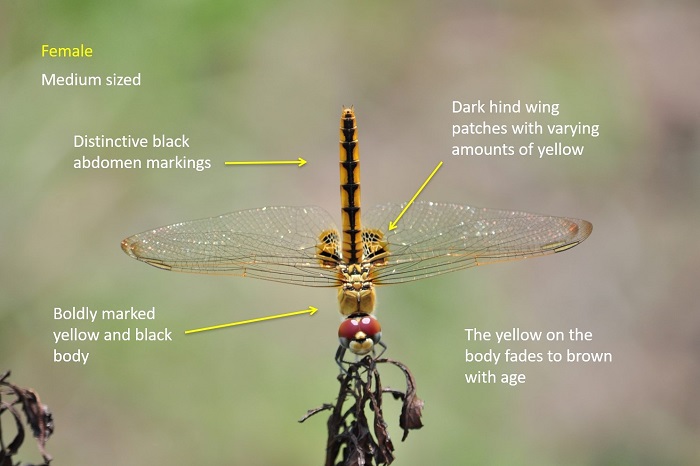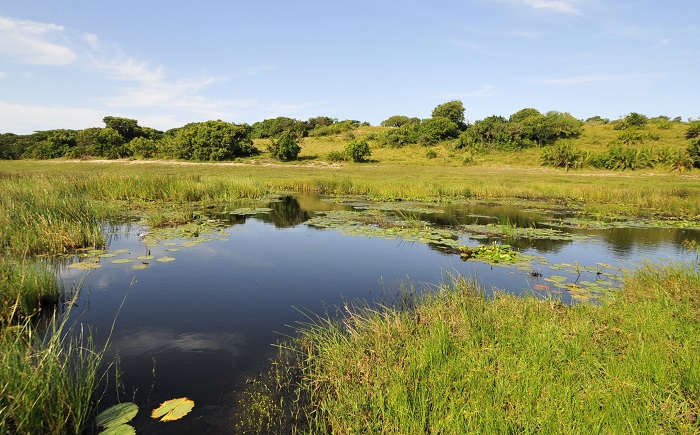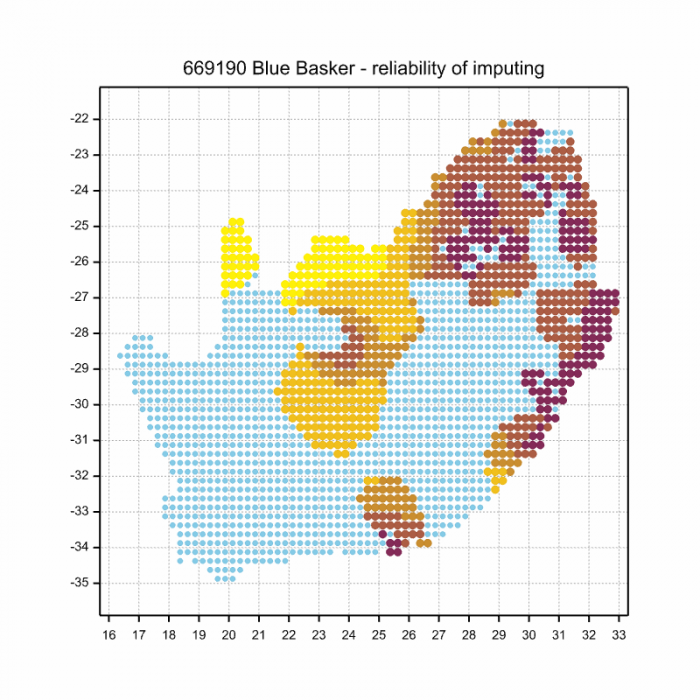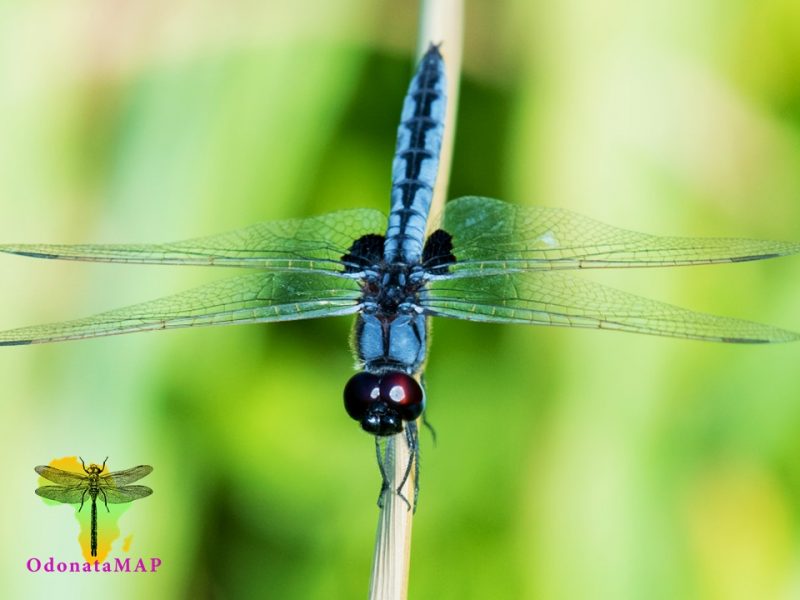View the above photo record (by Christian Fry) in OdonataMAP here.
Find the Blue Basker in the FBIS database (Freshwater Biodiversity Information System) here.
Family Libellulidae
Urothemis edwardsii – BLUE BASKER
(Selys, 1849)
Identification
Medium sized
Length up to 44mm; Wingspan reaches 80mm
Males are readily identified and unlike any other species in the region. The combination of the matt, dark blue body and black hind wing panels is diagnostic.
Females are overall yellowish with brown accents. They show bold black patterning down the length of the upper abdomen and dark brownish panels at the hind wing bases.
Females resemble those of Urothemis assignata (Red Basker). In that species the body colouration is more rufous than yellowish. The two species can be further differentiated by the patterning on the upper surface of the abdomen and by their slightly different hind wing markings.
Click here for more details on identification of the Blue Basker.

Enseleni Nature Reserve, KwaZulu-Natal
Photo by Ryan Tippett

Enseleni Nature Reserve, KwaZulu-Natal
Photo by Ryan Tippett
Habitat
Its natural habitats are freshwater lakes, pans, dams, marshes and slow flowing sections of rivers. They prefer still-water habitats with abundant plant growth like reeds and sedges. Non-breeding individuals can often be found in open grassy areas away from water.

Photo by Ryan Tippett
Behaviour
Blue Baskers are perch hunters and spend as much time perched as they do darting off to intercept prey, or to chase off a rival. They like to sit in open, sunny positions. During the heat of the day they can often be seen in the obelisk position, pointing the abdomens at the sun to reduce the amount of direct sunlight on their bodies.
Status and Conservation
Urothemis edwardsii is a common and widespread species. It is listed as of Least Concern in the IUCN Red List of Threatened Species. It is fairly resistant to habitat degradation and commonly occupies man-made habitats, providing its habitat requirements are met.
Distribution
The Blue Basker is widespread and occurs virtually throughout Africa south of the Sahara, including parts of Madagascar and Mayotte in the Comoros archipelago. Isolated or relict populations are also found in Algeria and Oman.
Below is a map showing the distribution of records for Blue Basker in the OdonataMAP database as at February 2020.

The next map below is an imputed map, produced by an interpolation algorithm, which attempts to generate a full distribution map from the partial information in the map above. This map will be improved by the submission of records to the OdonataMAP section of the Virtual Museum.


Further Resources
Virtual Museum (OdonataMAP > Search VM > By Scientific or Common Name)
More common names: Blousonvangertjie (Afrikaans)
Type Locality: Lake Houberia, Algeria
Recommended citation format: Loftie Eaton. M; Hofmeyr S; Tippett RM; Underhill L – Blue Basker Urothemis edwardsii. Biodiversity and Development Institute. Available online at http://thebdi.org/2020/02/25/blue-basker-urothemis-edwardsii/


Well done Ryan Tippett
Splendid achievement boy 👍🙏